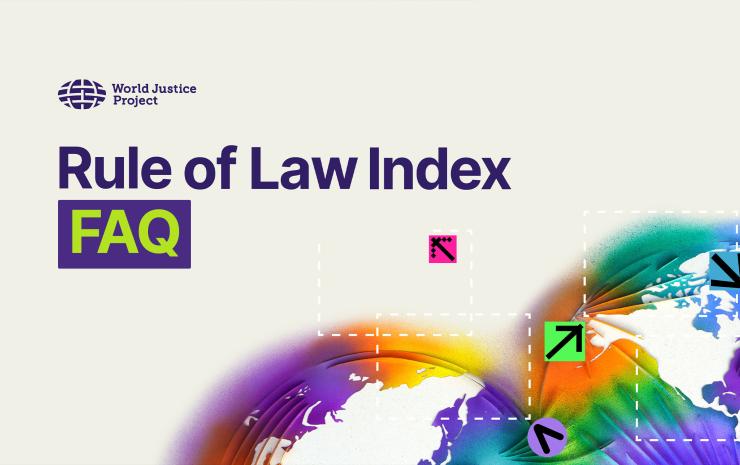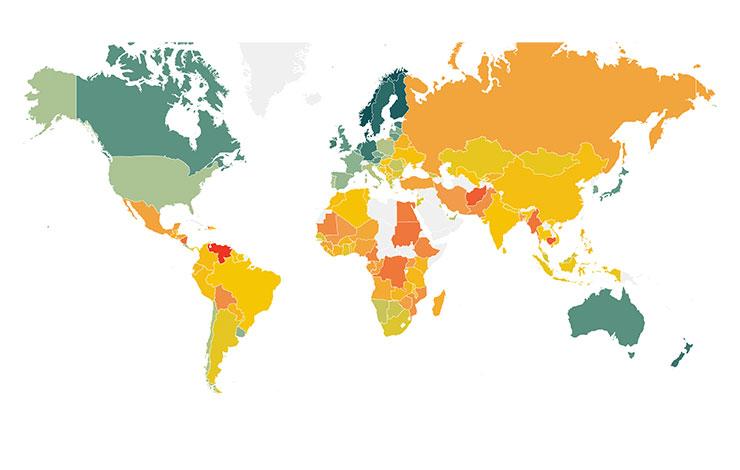
The health of a population provides another lens through which to examine value placed on human life by a government. All indices of health correlate positively with measures of justice. For example, members of Rule of Law abiding societies must be guaranteed "equal treatment and absence of discrimination" (Subfactor 4.1) and, Subfactor 4.2, "the right to life". Such individuals should be expected to have free access to health care and preventive health measures and enjoy long life, as a result.
To test this hypothesis one would examine reported data on population health status (e.g. Infant mortality, life expectancy, etc.) compare them to adherence to Rule of Law factors. Attempts to accomplish this are thwarted by the fact that health data are typically aggregated for a population and rarely stratified even on the basis of simple demographic characteristics. It may be possible to view data about certain health conditions for males vs. females; for members of certain ethnic/racial groups and, possibly, for different age groups.
This homogenized approach, however, prevents us from looking at sub-sets. For example, the infant and child mortality rate is higher for girls than boys in India, especially those whose mothers experienced intimate partner violence (1). This is a good example of violation of Subfactors 4.1 and 4.2 that would be missed if only published homogenized health data are reported. In addition, especially in countries with repressive governments, it is difficult to adequately examine the health status of other subsets of the population, particularly, the most disenfranchised. Because they must depend on others to represent their needs and advocate for their receipt of health care, groups that include prisoners, homeless people, the elderly and even children are at increased risk for poor health. Their health problems are often lost in aggregated data bases of reported indices of health.
On April 7, World Health Day, we should dedicate ourselves anew to advocating for access to high quality preventive and health care services for all and transparency in reporting health data for all segments of the population, particularly the most vulnerable.
Reference:
Gender-based disparities in infant and child mortality based on maternal exposure to spousal violence: the heavy burden borne by Indian girls. Silverman JG, et al.
Arch Pediatr Adolesc Med. 2011 Jan;165(1):22-7. doi: 10.1001/archpediatrics.2010.261."







